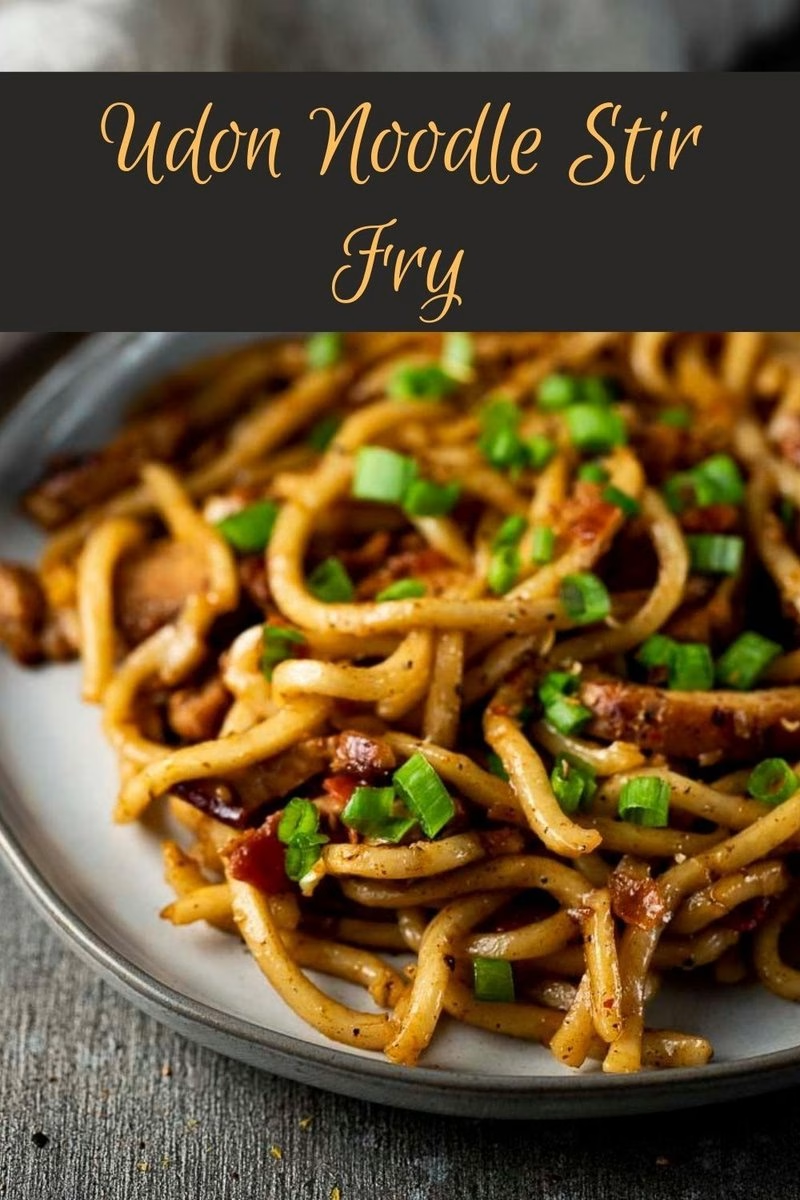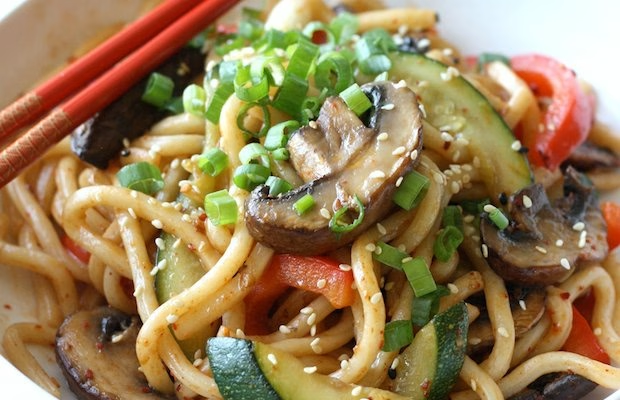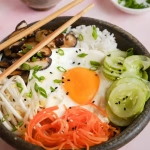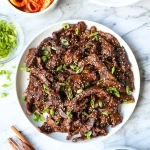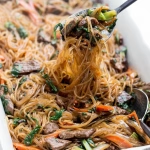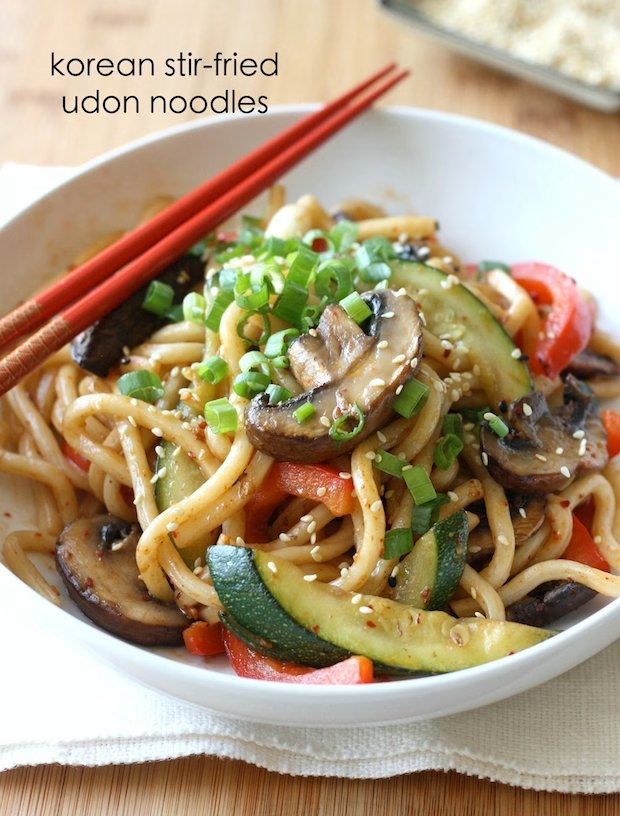
If you’ve never tried Udon (Korean-Style Udon), you’re in for a treat! This delightful noodle dish has roots in both Japanese and Korean cuisines, merging flavors to create a comforting and hearty meal. Udon noodles are thick, soft, and wonderfully chewy, making them a favorite among noodle lovers. In Korean cuisine, Udon takes on a unique character, often featuring a rich broth and a variety of fresh ingredients that highlight the essence of homemade comfort food.
In this article, you’ll discover how to make Udon (Korean-Style Udon) from scratch, explore its key ingredients, and learn about some variations to personalize your dish. From the basics of preparing the broth to the perfect toppings, we’ll ensure you have everything you need to whip up the best Udon (Korean-Style Udon) right in your kitchen!
Ingredients
| Ingredient | Measurement | Description |
|---|---|---|
| Udon noodles | 200g | Udon noodles are the star of the dish, providing a chewy texture and absorbing the broth’s flavors. |
| Chicken or beef | 150g | Thinly sliced meat adds a rich, savory taste to your Udon (Korean-Style Udon). |
| Vegetables | 1 cup assorted (carrots, green onions, mushrooms) | Fresh vegetables provide crunch and nutrients, balancing the dish’s flavors. |
| Garlic | 3 cloves, minced | Garlic enhances the aroma and depth of flavor in Udon (Korean-Style Udon). |
| Ginger | 1 tsp, minced | Ginger adds a warm, spicy note that pairs beautifully with the broth. |
| Broth (dashi or chicken stock) | 4 cups | A flavorful broth serves as the foundation for this dish, enriching each bite. |
| Soy sauce | 2 tablespoons | Soy sauce provides a salty depth, enhancing the overall taste of the Udon. |
| Sesame oil | 1 tablespoon | This oil adds earthiness and a nutty flavor that rounds out the dish. |
| Chili flakes | Optional | For a kick of heat, add chili flakes according to your taste preference. |
Step-by-Step Instructions
- Prepare the Ingredients – Start by slicing your chicken or beef thinly. Chop the vegetables into bite-sized pieces. Don’t forget to mince the garlic and ginger to unleash their rich flavors!
- Make the Broth – In a medium pot, pour in the broth and bring it to a gentle simmer. Stir in the soy sauce and adjust to taste. Let it simmer for about 5 minutes to blend the flavors.
- Sauté the Aromatics – In a separate pan, heat some sesame oil over medium heat. Add the minced garlic and ginger, sautéing them until fragrant. The aroma will have your taste buds buzzing with anticipation!
- Cook the Meat – Add the sliced chicken or beef to the pan, cooking until browned. This step is crucial for flavor development! You can sprinkle chili flakes here if you like it spicy.
- Add Vegetables – Toss in your chopped vegetables and sauté for another 3-5 minutes until they are tender yet still vibrant. They’ll add both flavor and texture to your Udon!
- Combine Ingredients – Once the meat and vegetables are cooked, pour the sautéed mixture into the simmering broth. Give it a good stir and let it simmer for another 10 minutes.
- Cook the Udon Noodles – In a separate pot, cook the Udon noodles according to package instructions. Once they are cooked, drain and rinse them under cold water to stop cooking.
- Assemble & Serve – In a bowl, add the cooked Udon noodles and then ladle the hot broth with meat and vegetables over them. Garnish with extra green onions or sesame seeds if desired. Enjoy your delicious Udon (Korean-Style Udon)!
Pro Tips
- Use fresh ingredients: Fresh vegetables and quality broth can make or break your Udon (Korean-Style Udon). Whenever possible, go for the freshest options.
- Adjust seasoning: Taste as you cook! Everyone’s palate is different, so adjusting the soy sauce or seasoning will get you the best flavor.
- Experiment with toppings: Feel free to add toppings like a soft-boiled egg, pickled radish, or nori for an extra touch.
- Make it a vegetarian delight: Substitute meat with tofu and use vegetable broth for a delicious vegetarian version of Udon (Korean-Style Udon).
- Storing leftovers: Store any leftovers in an airtight container in the fridge for up to three days. Reheat gently to preserve the flavors.
Nutritional Information
| Nutrient | Per Serving |
|---|---|
| Calories | 450 |
| Protein | 20g |
| Carbohydrates | 60g |
| Saturated Fats | 3g |
| Fiber | 5g |
| Cholesterol | 50mg |
| Sugars | 2g |
| Fat | 10g |
FAQs
What is the best way to store Udon (Korean-Style Udon)?
Store any leftovers in an airtight container in the refrigerator for up to three days. Reheat gently when you’re ready to enjoy it again!
Can Udon (Korean-Style Udon) be made vegan or gluten-free?
Absolutely! Substitute the meat with tofu, use vegetable broth, and ensure you pick gluten-free Udon noodles.
What are the best side dishes to serve with Udon (Korean-Style Udon)?
Some great side dishes include kimchi, edamame, or a fresh salad to balance the meal.
How long does it take to prepare Udon (Korean-Style Udon)?
The total time for this recipe is about 30-40 minutes, making it perfect for a weeknight dinner!
Can I freeze Udon (Korean-Style Udon) for later?
Yes, you can freeze the broth and cooked noodles separately. Just be sure to cool them down first and use airtight containers.
What variations can I try with Udon (Korean-Style Udon)?
You can customize your Udon by adding different proteins like shrimp or squid or utilizing seasonal vegetables.
Is Udon (Korean-Style Udon) healthy?
It can be quite healthy, especially if you load it up with vegetables and control your sodium intake!
Where can I buy Udon noodles?
You can find Udon noodles in the international aisle of most grocery stores or at Asian markets.
Cooking Udon (Korean-Style Udon) at home can be a fun and rewarding experience! With its blend of flavors and textures, it’s no wonder this dish is loved by many. Now that you have the recipe and tips, why not gather your ingredients and give it a try? Don’t forget to invite some friends to share the deliciousness!
Tried this Udon (Korean-Style Udon) recipe? Let us know your experience in the comments!
